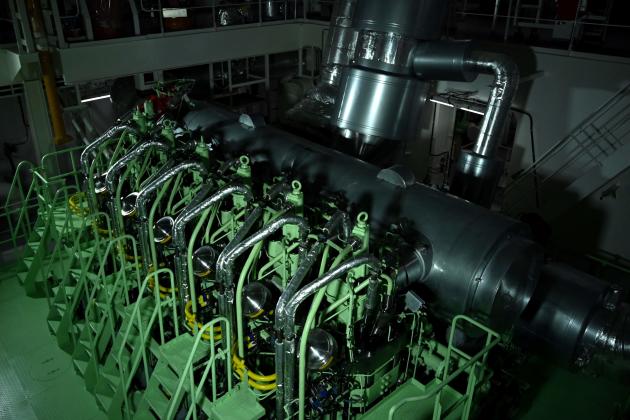Loaded with symbols, the baptism, which took place with great pomp on Thursday September 14, on the quays of the port of Copenhagen, just opposite the head office of the Danish shipowner AP Moller-Maersk, had been thought out down to the smallest details. From the title of the song, performed by a choir of young women, at the start of the ceremony – The Times They Are a-Changin’by Bob Dylan (“times are changing”, in French) –, at the choice of the godmother, the President of the European Commission, Ursula von der Leyen, campaigning to defend her European Green Deal, passing by the name of the new container ship: Laura Maersk.
This is how the first steamboat was named in 1886, purchased by Captain Peter Maersk Moller, father of the founder of the shipping company, long a world leader, with 17% of the market share, before ‘to be dethroned by the Swiss MSC in 2022. This ship ran on coal. Built at the Ulsan shipyard in South Korea, its successor, which has already traveled 21,500 kilometers to reach Copenhagen, is powered by “green” methanol.
According to Maersk CEO Vincent Clerc, this is not only a world first, but a real tour de force. When his company, in 2018, committed to achieving carbon neutrality by 2050 – an objective brought forward ten years ago – it had not “no clear path” to get there, he revealed. Because, at the time, no manufacturer offered ships running on green fuels.
“Chicken and egg paradox”
Tired of waiting for an offer that did not arrive, the Danish giant finally ordered, in 2021, a ship equipped with a dual fuel engine, which can run on methanol or fuel oil, from Hyundai Heavy Industries. The container ship could be delivered two years later and it made its maiden voyage using only methanol produced from biomass (forestry, agricultural waste or from landfills and wastewater), reducing by 65%. its greenhouse gas emissions. A feat, according to Mr. Clerc, which evokes “a historic step” in the decarbonization of international maritime transport.
The task ahead is enormous: the 100,000 ships that roam the world’s seas consume 5% of global oil production and are responsible for nearly 3% of global greenhouse gas emissions. With its 172 meters long and 32 meters wide, for a maximum capacity of 32,000 tonnes (the equivalent of 2,100 containers), the Laura, which will sail in the Baltic Sea and the North Sea, looks like a dwarf next to the giants that can transport up to ten times more freight. Suffice it to say that the daily 100 tonnes of CO2 that the ship will not emit are just a drop in the sea.
You have 74.96% of this article left to read. The rest is reserved for subscribers.
